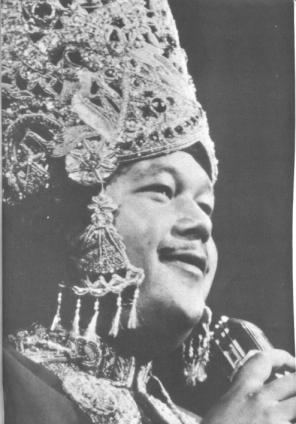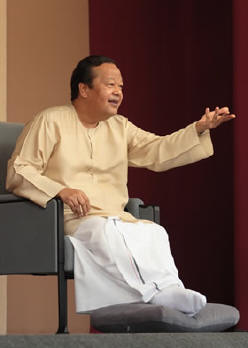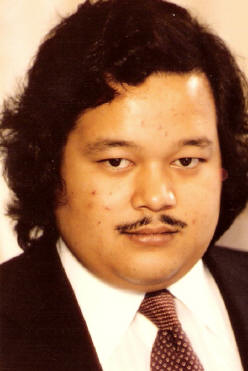The Four Techniques of Meditation.
At the heart of what Prem Rawat presents as his 'message' lays the concept of 'an achievement through meditation', the meditation is a gateway to an experience, and Prem Rawat is presented as the only gatekeeper. Prem Rawat prescribes four techniques of meditation, these are unexceptional and part of the wider canon of yoga; although the processes of preparation and teaching the techniques are elaborate they are taught without cultural reference.
Secrecy
Prem Rawat prescribes four techniques of meditation which used to be given mystical sounding titles: the Divine Light, the Divine Music, the Holy Name (or the Word), and Nectar. These days they are more prosaically known as numbers one, two, three, and four.
The teaching of the techniques within an initiation session is given an aura of secrecy and mysticism. Each initiate must make a vow that they will not reveal to anyone what these techniques are. Despite this presentation of a 'secret doctrine', the techniques are simply part of the wider canon of Yoga and the details of the Rawat techniques are now widely published on the Internet.
The Rawat techniques are standard in a popular branch of Sikh influenced Hinduism which has its origins in the late 18th century and now commonly referred to as the Sant Mat, or Radhasoami, tradition. (Also see David Lane's Genealogical Glossary and Commentary). There are thousands of Gurus who give out these techniques as part of their individual teachings and descriptions of the techniques are to be found in a popular treatise on yoga. (For a detailed discussion of the yoga origins of the Rawat meditation techniques see: Hans Rawat: Beliefs and Teachings of an Advait Mat guru )
Practice and Instruction
Prem Rawat stipulates that the techniques should be practised sequentially, one after the other in a given order, and within the same meditation session. He used to say that a sitting should be no shorter than one hour, giving approximately equal time of 15 minutes or so to each technique, with two such sessions being required each day. Rawat no longer specifies a minimum of one hour meditation nor is there a requirement to practise twice per day, although the meditator is still instructed to give equal importance to each technique.
Each technique engages a particular sense: seeing, hearing, kinaesthetic feeling, and tasting/smelling respectively and each technique isolates a small area of the body which the practitioner must concentrate on, using the sense appropriate for that technique. Prem Rawat is precise about the physical aspect of each technique but he does not teach, or talk about, what the meditator has to do mentally. This lack of mental direction means that Prem Rawat's followers may all be doing the same four techniques in the same way physically, but that the mental focus they each employ may differ widely. Some followers just concentrate on the highlighted physical spot in a very one-pointed and exclusive way while others use the physical spot more as a reference point and try to have a more open concentration around it. Others again, try to see or sense through the physical object of concentration into an inner world, and yet others try specifically not to do this!
Prem Rawat's apologists explain the narrowness of Rawat's meditational instruction as a profound sign of a 'true' teacher. The sense inferred is that where the meditation takes a person is beyond 'words and instruction', and so Prem Rawat leads you to the physical points of concentration which are portals into your true being. Words or explanations - even from the true master can not tell you how to go through those portals into the deathless state.
The Techniques - more questions than answers
In the first technique, or 'Light', the meditator focuses on their forehead, at a spot between, and a little above the eyebrows. The thumb and first two fingers of the dominant hand help with this, the index finger resting lightly on the correct spot on the forehead, and the thumb and middle finger resting lightly on each closed eyeball, to steady and stop the eyeballs from moving. Where you are to actually focus your sight is never stated - do you stare through the coloured shapes and blackness behind the closed eyelids into infinity? Do you focus right on the back of your eyelids, trying to make sense of the swirling colours, the 'black light', you see there? Do you actually focus not on what you see, but on the spot on your forehead where your index finger rests? Do you turn your eyeballs upwards to this spot, or do you keep a level horizontal gaze?


In the second technique, or 'Music', the meditator stops their ears with each thumb, twisting slightly so that the fingers of each hand rest on the top of the head. The technique is then to listen to what you hear, the Sound of the Spheres, or the sound of silence. Or is it a sound like a waterfall? Is that just a physical manifestation of the pulse in the thumbs in the ear, or the trapped air in the closed ear canal? And if it is, do you listen to it, or do you listen through it, trying to find some ineffable celestial sound beyond it? Are you trying to listen to a silence beyond it?
These first two techniques involve placing one hand (in the first technique) or both hands (in the second) up to your head. This can be tiring and cause arm muscle fatigue. For the first sixteen or so years that Prem Rawat was teaching in the West, it was common for meditators to use a 'beragon', which was an arm rest shaped like a letter 'T' about 2 feet high - the bottom of the stem of the 'T' rested on the floor or cushion you were sitting on, and each elbow rested on the crosspiece of the T. In the mid-eighties, Prem Rawat discouraged the use of beragons, or any form of arm rest, and the meditator was required to hold their arms up without support. Beragons are recommended by other Gurus and indeed one design has been patented. In the late 1980s, Prem Rawat discouraged (forbade) the use of beragons, or any form of arm rest, and the meditator was required to hold their arms up without support. This didn't make it any easier for the aging premies then reaching 40 and most of whom are now (2015) in their 60's and certainly Prem Rawat has never publicly demonstrated that he can do it so they use their knees, armchairs, pillows or lie down on their backs to do the technique. It is amusing to think of these thousands of aging devotees suffering the pains of arthritis and sore shoulders for 30 minutes (the required minimum) every day while simultaneously trying to relax into some kind of transcendental experience.
The third technique, or 'Holy Name', or 'The Word', is simply to follow your breath. Many meditation traditions involve watching the breath in some way, but most traditions give clear instructions on how to do this, since in fact you can use your breath in many different ways to create many different mind states. Prem Rawat says very little about it. His most common instruction while demonstrating the technique is to move his hand up and down in front of him as he breathes in and out, the implication being that you are to follow the in-breath and out-breath upwards and downwards (or is it downwards and upwards?) from your nose to the base of the lungs or the abdomen and up again. Another instruction he sometimes gives is that you follow your breath like you are sitting on an inner swing, with Prem Rawat pushing this swing. This is one of the clearest signs in recent times that Rawat is still inferring that he is the power inside the meditator helping and guiding their meditation.
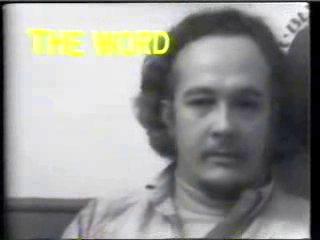
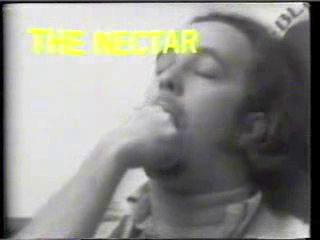
The fourth and final technique, or 'Nectar', involves curling the tongue upwards and placing the tip of the tongue … where? Well, for many years, the instruction was to place it on the roof of the mouth as far back as you could possibly force it, the goal being to make it go behind the uvula (the little skin flap that hangs down at the throat entrance), and up the rear nasal passage as far as you could. The ultimate fanciful notion was to touch the base of the brain, and make a cosmic connection, although there are no reports of anyone being actually able to do this. Turning the tongue back in this way is a well known yoga technique called kechari mudra . In more recent times, Prem Rawat has dropped all reference to the uvula, and just required the meditator to rest the tip of the tongue on the roof of the mouth in a manner that is comfortable, even if they cannot get it any higher than the back of their front teeth. But again, on what is the meditator to focus? Just where the tip of the tongue is physically, or through it in some sense, or do you focus on what you taste?
Those who are considering practising the meditation techniques described on this website are referred to the information given under Negative Effects.


